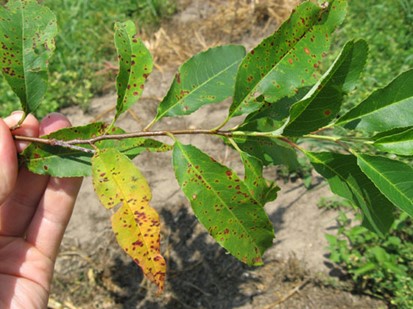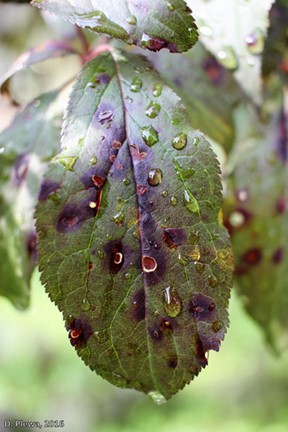Issue 3, May 26, 2022
Cherry Leaf Spot
Cherry leaf spot symptoms are evident on edible and ornamental cherries in Illinois. This disease is caused by the fungus, Blumeriella jaapii. We usually see symptoms appear in early to mid-summer, beginning as small reddish/purple spots on the upper leaf surface. These spots turn brown and may merge together. The centers of the spots may drop out, giving the leaves a shot-hole appearance. The affected leaves often turn yellow and may prematurely fall from the tree.


Fungicides can be applied to highly susceptible trees or trees that were severely affected in previous years. Fungicides containing chlorothalonil, chlorothalonil + thiopanate-methyl, copper + mancozeb, mancozeb, myclobutanil, propiconazole, and pyraclostrobin + boscalid are labeled for use against this disease. Applications should begin in spring at petal fall, with a second application 2-weeks later. If symptoms continue to develop, or if the spring application was missed, later applications in summer may be warranted, especially if the summer has been particularly wet or humid. For trees with edible fruits, carefully read the fungicide label to ensure that the product is approved for that use. The fungal pathogen survives the winter on fallen leaves; raking and removing leaves in the autumn may help reduce infection the following year.
Author:
Travis Cleveland